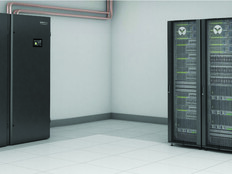FedTech Webinar Finds Agencies Placing Greater Focus on Power Management
Data centers are increasingly focused on power costs, and with research group IDC forecasting more than $50 billion in spending on data center construction in 2014, data center managers can expect power and cooling to remain a major concern.
Shawn P. McCarthy, research director with IDC Government Insights, shares this view. McCarthy moderated the recent FedTech webinar “DCIM: Making Power Manageable.”
During the webinar, two federal IT leaders told McCarthy how they’re tackling this issue, which is becoming even more critical as federal budgets shrink and data centers grow.
At its data center in rural Virginia that handles acquisition data and processing, the Army has made numerous upgrades to the power and cooling systems, said Richard T. Eva, program director for the Acquisition, Logistics and Technology Enterprise Systems and Services (PD ALTESS). The result, Eva said, is a world-class facility that will be one of the Army’s enduring data centers as it consolidates and closes many others.
The National Nuclear Security Administration has established YOURcloud, a cloud computing program that uses innovative IT smart meters to dynamically compute the power savings yielded by energy-efficient technologies such as server virtualization, said Anil Karmel, NNSA’s chief technology officer for management and operations.
Virtualization helped NNSA reduce the time it takes to provision a new server from 30 days to 30 minutes; the agency also is paying close attention to shutting servers down, Karmel said.
“IT is very good at turning things on, but not good at turning them off,” he said. The agency found that some customers would commission new servers but would fail to shut them off when a project ended and the servers were no longer needed, a significant waste of energy. To address this concern, NNSA establishes agreements with its customers that allow new servers to run for one year, but after that, they are turned off unless the customer requests that they remain on.
The agency also makes an effort to find green partners. When establishing relationships with public-cloud providers, NNSA looks for providers with low power usage effectiveness ratings.
ALTESS lowered its energy bill with innovation as well. The data center has a “free air” cooling system that uses external ambient air when temperatures drop below 45 degrees, which is about half the year, Eva said.
The data center also enlists the help of its customers when looking for energy savings. The center’s monitoring systems break down energy usage to a level specific enough that customers can see how much power their servers use. This offers an incentive for them to choose more efficient options.
Register and watch an archived version of the DCIM webinar here.








